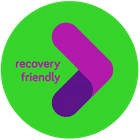The fentanyl addiction epidemic we are living through is sweeping the nation and leaving entire communities in complete despair. In response to this crisis, it’s essential to understand fentanyl facts and how the drug can affect your life whether you consume street drugs or not. Awareness of fentanyl facts helps us address the crisis head-on and cut through the immense chaos of misinformation many receive about this deadly drug.
It’s more crucial than ever to put our judgment, stigma, and bias about addiction and drug use aside. With people dying all over the country, we must work diligently to understand their experiences and change the outcome for future populations vulnerable to fentanyl addiction. Reliable sources, comprehensive rehabilitation, and the presentation of accurate fentanyl facts can make a substantial difference and may even help end this deathly chapter.
Fentanyl is a powerful manufactured opioid, roughly 50 to 100 times stronger than heroin, oxycodone, and morphine. It has been linked to thousands of preventable deaths in recent years, and the numbers continue to rise. In this blog post about fentanyl facts, we will explore the history of fentanyl and the risks and dangers associated with this deadly drug. We will also discuss options for recovery and ways to protect yourself and those close to fentanyl abuse. These fentanyl facts can make all the difference in navigating life in the presence of this dangerous substance.
Essential Fentanyl Facts and Information!
What is the History of Fentanyl?
The history of fentanyl use dates to the 1960s. An important fentanyl fact is the drug was initially developed as a powerful pain reliever for patients experiencing cancer. However, today fentanyl use has become increasingly widespread. Additionally, its potency has dramatically increased. Fentanyl, which was once mainly limited to medical settings, is now easily accessible on the streets. In recent years, the number of fentanyl-related overdoses has skyrocketed, and it is now seen as one of the most dangerous substances on the market today.
How Can You Identify Fentanyl?
The best way to be fentanyl-aware is first to identify the common substances fentanyl is mixed with, such as heroin, MDMA, Xanax, oxycodone, and cocaine, because they often mimic the look and feel of the parent substance. Additionally, a fentanyl fact to remember is that the drug is odorless, tasteless, and colorless, so it’s advisable to use a fentanyl testing strip or kit to detect and rule out fentanyl presence. But it’s essential to know that testing kits and strips are not always accurate.
The best way to prevent fentanyl poisoning is never to purchase or consume street drugs. Additionally, you should never consume a drug not provided directly by your doctor. If you are prescribed the medication, learn the essential fentanyl facts and always follow medical instructions carefully.
What Are the Effects of Fentanyl on the Human Body?
The drug’s mechanism is a vital fentanyl fact to understand. The drug binds itself to opioid receptors in the brain and overwhelms them, leading to a sudden and intense feeling of euphoria. It then stops pain signals from being sent to the brain, leading to physical numbness and disorientation.
In some cases, fentanyl can also cause slowed breathing or even heart failure, leading to death if prompt medical attention is not provided. Another fentanyl fact to consider is that drug use also increases the risk of addiction as dopamine levels decrease in response. Other long-term consequences include psychological and cardiovascular damage. As fentanyl misuse continues to be a grave danger to public health, it must be taken seriously and avoided when possible.
What Are the Risks Associated with Abusing Fentanyl?
The risks associated with fentanyl addiction are severe and potentially life-threatening. Fentanyl is so potent that it can easily cause an overdose if taken in large doses or mixed with other substances. In many cases, even a minimal amount can lead to poisoning in a user that unknowingly consumes the drug or hasn’t developed a tolerance.
Many overdoses can be fatal and may require immediate medical attention. In addition, fentanyl use can lead to physical dependence, which can be incredibly difficult to quit once you have started using the drug. Fortunately, there are options for those suffering from fentanyl abuse or addiction. Learning fentanyl facts is typically an excellent place to start.
What Are the Names Commonly Given to Fentanyl Street Products?
When learning fentanyl facts, you must familiarize yourself with the street names drug dealers have given various fentanyl products. These include names like:
- Apache
- Goodfella
- China Girl
- Dance Fever
- He-Man
- TNT
- Friend
- Death
- Tango & Cash
How Can You Recognize a Fentanyl Overdose, and What Should You Do?
The symptoms of a fentanyl overdose can vary from person to person and even change throughout an overdose. Signs like confusion, sleepiness, or difficulty breathing indicate that an individual may suffer from fentanyl or opioid overdose. Other symptoms include a slow heart rate, clammy skin, dark circles under the eyes, pinpoint pupils, and seizure-like convulsions. Consult medical professionals immediately if these signs are present in a loved one or the individual themselves. Early medical intervention can make all the difference in this serious situation.
Why Are Withdrawal Symptoms Important Fentanyl Facts?
One of the most concerning effects of fentanyl abuse is the severity of fentanyl withdrawal symptoms. These occur when attempting to quit the use of the drug. Withdrawal from fentanyl can present a range of physical, psychological, and behavioral symptoms, including but not limited to the following:
- sweating
- chills
- fever
- nausea
- vomiting
- general muscle pain
- extreme restlessness
- irritability
- anxiety
- insomnia
- confusion/delirium
- seizures
- death in very heavy users.
Fentanyl withdrawal requires medical intervention to guarantee successful drug cessation and is ideally complemented through counseling and behavioral therapy treatments to establish a course for sustained sobriety. In most cases, withdrawal begins around 2-4 hours after the last use. Severe symptoms pass within a few days, but for many, it can take months to feel stable or ‘normal’ again.
What Are Treatment Options for Individuals Experiencing Fentanyl Addiction?
Treatment options for fentanyl addiction are varied and extensive. Choosing a recovery approach that leads to sustainable long-term recovery is essential. The most effective fentanyl addiction treatments may involve medication-assisted detoxification, therapeutic counseling, supportive social programs, treatment centers, and rehabilitation programs. All these options assist individuals in regaining their health and balance. However, it’s important to remember that fentanyl recovery may look different for everyone.
Medication-assisted treatment (MAT), such as buprenorphine and naloxone, can help reduce fentanyl cravings and decrease the likelihood of relapse while providing an environment conducive to healing. Additionally, a therapeutic counseling approach focuses on addressing psychological issues, providing relapse prevention strategies, and teaching skills necessary to cope with triggers and improve decision-making abilities.
Additionally, supportive social programs often include interventions that aid the individual in strengthening their natural support system of family members, employers, providers, mentors, or counselors. Some users find engaging in extracurricular activities such as sports or outdoor recreation beneficial. They see these activities as providing relaxation and distraction from thoughts or feelings associated with fentanyl use while connecting individuals with peers with similar sobriety goals.
Treatment centers and programs are available to help individuals overcome their habits and live healthier lives. For more information about GateHouse Treatment and our approach to fentanyl recovery, which includes proven methodologies and comprehensive treatment, click here.
What Precautionary and Safety Measures Should You Take To Protect Your Family from Fentanyl?
If fentanyl or any other drugs are found in your home, safely and correctly dispose of them. It is also wise to lock up medication cabinets that contain fentanyl or other prescription medications. Finally, monitoring access to the internet can help limit exposure to fentanyl since drug traffickers often advertise their illicit offers through various channels, including social media sites. These steps can be a proactive way of safeguarding your family from fentanyl-related harm.
Recovery from Fentanyl Addiction at GateHouse Treatment
Ultimately, understanding the risks associated with fentanyl is essential for staying safe and protecting yourself from abuse or addiction. Educating yourself and your loved ones on fentanyl facts is crucial in fighting the epidemic and saving lives.
If you or someone close is struggling with fentanyl abuse, don’t hesitate to seek help. Treatment centers like GateHouse Treatment can make a profound difference in your life and break the chains of addiction. Call us at (855) 448-3588 or contact us to learn more. With the proper support, we can beat this deadly drug together.
- Cymbalta Withdrawal: Causes, Symptoms, And Management - October 12, 2023
- Boredom in Recovery: 5 Tips to Avoid Relapse - October 6, 2023
- Overconfidence and Rehab: Avoiding Relapse - October 4, 2023




